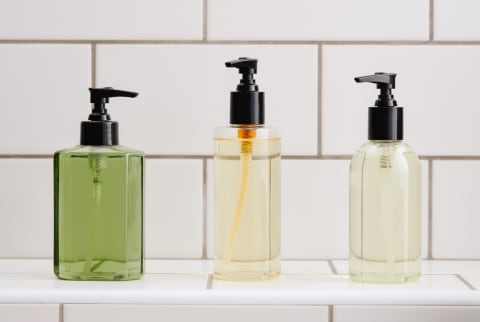Advertisement
What Is Extremophile Endurance Technology In Beauty? Experts Explain


When I think of botanical extracts, my mind goes straight to the classics: aloe vera, coconut oil, olive oil, shea butter, and the like. But the natural world owns a lush sampling of plant extracts, so many of which we can use for our beautifying rituals. And often, these ingredients are found in the most unique of places—or rather, the extreme.
Extremophile endurance technology, dubbed extremophiles1, are plans that are able to adapt and thrive in environments that otherwise are uninhabitable—the desert, depths of the ocean, the Arctic. And when extracts from these plans are harvested for the skin and body, we are able to benefit from their resilience.
What are extremophiles in beauty?
Recently I was chatting with Tata Harper—brand founder, natural beauty expert, and product formulator—in an episode of Clean Beauty School, and she mentioned that she has been a fan of using these ingredients for some time.
"[The ingredients are] plants that have adapted over time in nature to withstand all these extreme conditions and stress that they've gone through. They basically develop a superpower. And because of that superpower, it can be harnessed and used in skin care to support the skin through the modern, stressful environment," she says.
Extremophiles, we should note, are not simply beauty ingredients. In fact, most of their applications have been used in medicine and environmental work2. For example, as author James Coker, chair of the Department of Sciences at the University of Maryland, writes in this review of extremophiles, some have been used to help clean up oil spills, while others have been adapted for their antimicrobial properties: "Extremophiles are producers of a host of antibiotics, antifungals, and antitumor molecules. In truth, this should come as little surprise, as microorganisms have been fighting for survival for billions of years. After that long a time, it should be clear that microorganisms have perfected the art, but it is up to us to take advantage of it."
Additionally, plenty of research and clinical trials have been done on extremophiles in the beauty industry. But because each of these ingredients is so different, to understand how they work you need to get into the specifics of the extract itself. Algae is a common one used in many skin care products; Harper notes, of a class of algae she uses, that the "micro algae peptides actually create like an allergen micro filter that shields the skin against stressors, allergens, pollution—and so it stops the skin from overreacting."
But algae's superpowers range far and wide. For example, there is a salt-tolerant blue algae3 that has adapted to living in extremely salty bodies of water, which have adapted systems to preserve them from the salty environment and help them hold water. Essentially, these kinds of algae have adapted humectant properties—humectants are ingredients that bind to and hold water. In fact, according to board-certified dermatologist Keira Barr, M.D., when used topically, several types of algae have been found to be a better humectant4 than one of the most popular hydrators of all, hyaluronic acid.
Deserts are another popular place to harvest, notably using resurrection plants. "These are plants that after it rains, all of a sudden, they're in full bloom," says Harper. "They can withstand no water for months and then fully recover the second they're exposed to moisture again. Well, when you harness the moisture retention system, the ingredients can help your skin hold in water and repair the barrier."
The takeaway.
The planet and its lush biodiversity is a lovely thing. And in the case of skin care, there is much we can learn and harness from the plants around us. Such is the case with extremophiles. Sometimes, taking it to the extremes is just what the skin needs.